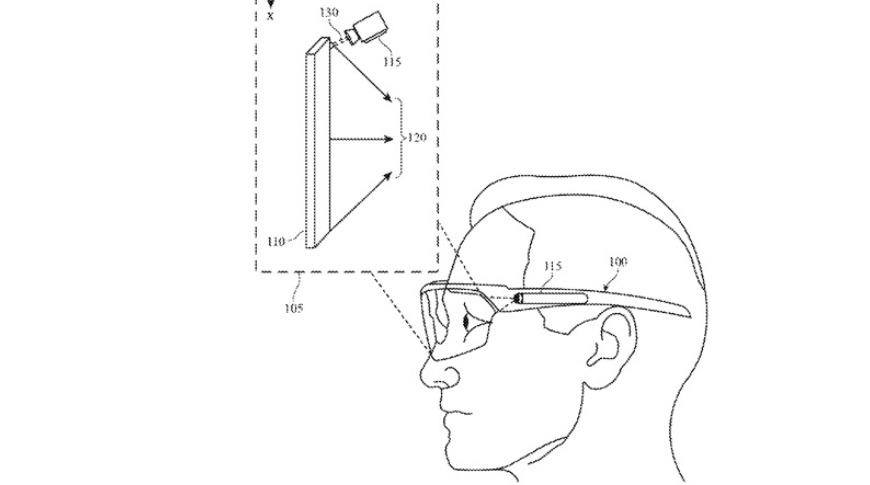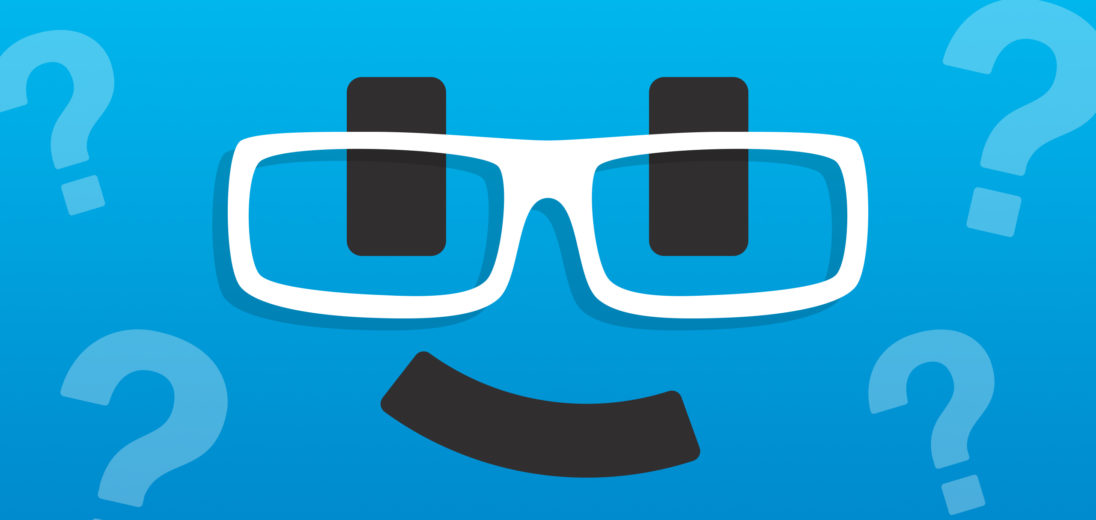Apple Glasses are slated to become one of Apple's new groundbreaking accessories. We're not sure when they'll be available, but plenty of hints have been dropped about what they are, what they'll be able to do, and how much they'll cost. In this article, we'll discuss everything we know about Apple Glasses and share insights from industry experts.
What Are Apple Glasses?
Apple Glasses are a new consumer device in development by Apple. Most of the information comes from patents filed by Apple, rumors from insiders, and some logical thinking about what approaches Apple might take to create the wearable device.
The basic idea is that Apple Glasses will be an accessory that will pair to your iPhone and provide you with “heads up” information. They would also, presumably, be able to give you access to certain extended reality experiences.
What Is Extended Reality?
Extended reality is a catch all term that includes virtual reality, augmented reality, and mixed reality.
Virtual reality (VR) is a technology that immerses you into a virtual world using a headset. This is generally used for gaming and 360 degree video.
Augmented reality (AR) and mixed reality (MR) both deal with real world environments by placing digital “objects” on the screen. They require powerful sensors that can detect obstacles and find clear, flat surfaces to place digital objects. Augmented reality only overlays objects on your screen, while mixed reality allows these virtual objects to be blocked by other objects like tables and chairs.
An example of a device that uses mixed reality is Microsoft Hololens, which has a variety of features to support the technology for industry consumers.
Apple Glasses And Extended Reality
We don't know what Apple Glasses will be capable of, in terms of extended reality. However, the idea is to bring AR and MR from smartphone screens directly to our vision in order to make it more accessible for users. This would allow a user to simply look at something, like a QR code, to quickly launch an AR experience.
Imagine looking into a store window with your glasses and product information pops up so you can quickly compare one product to another. Another opportunity to use this technology would be for virtual meetings and calls with your friends and family.
Not-So-Smart Glasses
Apple Glasses are looking to succeed where other products, like Google Glass, failed. About seven years ago, Google Glass was an attempt to introduce a product that might eventually replace the need for smartphones. It didn't get very far.
According to Kenny Trinh, Managing Editor at Netbooknews.com, “Google Glass failed because it failed to create a gadget that solves real problems. It was a bulky machine with poor battery life, and even caused controversy over its inconspicuous camera that could be used to record people in public without their knowledge.”
Ari B. Adler, Director of Communication for a former Michigan Governor told us, “One of Apple's strengths over the years has been people simply accepting and adopting anything they produce. Apple has an opportunity to introduce smart glasses into the mainstream using their popular influence, so they want to make sure that they get it right the first time around. This may explain why we haven't seen Apple Glasses sooner.”
Separating Fact From Fiction
With devices like Apple Glasses, it can be hard to see the difference between truth and rumor. It's important to understand that much of the information currently out there is speculation. However, you can make reasonable predictions based on the current state of technology and evidence.
Jon Prosser, a commonly quoted leaker of Apple Glasses rumors, claims that Apple intends to name the device Apple Glass. He has also claimed that they would be released alongside a heritage edition that would resemble the glasses worn by former Apple CEO Steve Jobs. Finally, Prosser claimed that the glasses would release in 2021.
It's important to consider that there is little evidence behind this leak. Bloomberg journalist Mark Gurman has even outright referred to Prosser's heritage edition claim as “complete fiction”.
Do Apple Glasses Exist?
Probably — at least in some form. Apple Glasses don't officially exist, but there is plenty of evidence that Apple is developing smart glasses. The most reliable evidence comes from patents filed by Apple.
Patents are legal documents that companies file to ensure that they can claim an invention as their own design. This guarantees that they can make money off of a future product once it's built. Based on current patents that Apple has filed, we can tell that they are developing some kind of head-mounted, augmented reality-supported device.
Patents

There are a lot of Apple patents that suggest something like a pair of smart glasses are being developed by Apple. However, you should keep in mind that the patent drawings aren't meant to represent the final product, but the particular technology that is being patented.
One of the Apple patents shows a ‘holographic display' on a pair of otherwise ordinary looking safety glasses. While they aren't the most fashionable looking device in the illustration, but it shows that Apple is experimenting with holographic, face-mounted displays. (We're sure Apple doesn't want to give away their design ideas in a patent application.)
Acquisitions
Another way we can tell that Apple is up to something with Apple Glasses is through the startup companies they purchase. Startup companies are groups of developers who try to make money by selling a particular technology to other companies or consumers. If Apple buys a startup focused on making watches, you can guess that Apple is interested in building watches.
Two big startups Apple has acquired are NextVR and Akonia Holographics. NextVR was a virtual reality media streaming company, while Akonia Holographics was an AR headset lens developer. When putting these two companies and patents together, it's clear that Apple has something in store in terms of AR and head-mounted displays, like Apple Glasses!
How Will Apple Glasses Work?
There are a lot of unknowns. However, we can expect Apple Glasses to have a user interface, internal components, and a way to charge them.
User Interface
The code in iOS 13 suggests that there will be a unique user interface for Apple augmented reality glasses called Starboard. We have no idea what this might look like, but you can imagine that interacting with Apple Glasses could be much different than your iPhone or Apple Watch, since there is no screen to swipe and tap on.
Performance
For a device that aims to be comfortable, there won't be a lot of amazing visuals available directly on the device.
According to Joseph Staples, a freelance writer and owner of joeisastaple.com, “Up until this point, the consumer perception of AR/VR is glued to bulky headsets, wired to a computer that needs a beefy graphics card. Granted, these headsets provide a different kind of experience, but the point is: headsets aren’t mobile.”
His point is that the more powerful AR headsets on the market are very bulky. Trying to pack that kind of power into a lightweight product that resembles an ordinary pair of glasses could be very difficult.
However, Apple may not have to. Qualcomm has been developing chips that enable phones to deal with all the computational power needed by a head-mounted AR device. The headset would only provide a display for information, as well as sensors to understand its environment.
LiDAR
The most advanced AR technologies utilize a special sensing method called LiDAR (light detection and ranging). According to Oleksii Tsymbal, Chief Innovation Officer of MobiDev, “Not enough hardware power is the limitation so far. Smooth AR experience needs plenty of real-time data to be processed on the device. Like calculating the position of a virtually placed object. With movement, millions of ‘dots' in all dimensions must be continuously re-calculated.”
In other words, LiDAR on Apple AR glasses must be able to handle constantly interpreting one's view of the world to make extended reality work. It's likely that Apple may have to make some compromises on accuracy, precision, and performance since they won't be able to fit all those sensors in such a small space.
However, Tsymbal also mentions that “Apple has a successful track record with mobile AR. At this point, it is the most sophisticated, widely used one.”
Apple seems to be one of the best candidates to get the formula correct for useful, compact AR glasses.
Quality
Most VR and AR devices are big and bulky, in order to achieve high quality images for the user. According to Salome Mikadze, co-founder of Movadex.com, “Currently, the biggest limitation of AR glasses is their ergonomics, which is also the primary reason why the Google Glasses were not widely adopted by the customers.”
Uncomfortable systems aren't good for consumers, so how can Apple make their glasses high quality without being unwieldy?
It's important to remember that Google Glass came out in 2013, about seven years before this article was written. The technology has improved dramatically since then, and it's only getting better. We can also expect the quality of the images that the user will see to improve.
As further evidence that Apple has been researching better quality images for face-mounted devices, a patent application from Apple demonstrates the effort. Patent application 20200088994 describes something called “Scanning Display Systems” which would allow for a better quality and more compact viewing experience for users.
Prescription Lenses
It's possible that Apple Glasses will have prescription lenses available. You'll probably have to pay a lot extra in order to have your prescription lenses added to Apple Glasses.
Accessibility
A lightweight device like Apple Glasses could become a powerful accessibility tool. They could help magnify and translate text in the world around the user. This would allow them to see more clearly and understand information with ease.
Apple Glasses Price
According to Jon Prosser, Apple Glasses could retail at $499. We're not sure if he's right, but it would be a much more consumer friendly and competitive price point than the extremely expensive Google Glass platform.
Imagine The Future
We'll surely learn more about Apple Glasses as time goes on, and we'll be sure to clue you in as soon as we receive updates. Thank you for reading, and if you enjoyed this article, please share it with a friend or family member. If you have any questions, or your own theories about Apple Glasses, leave a comment down below!
